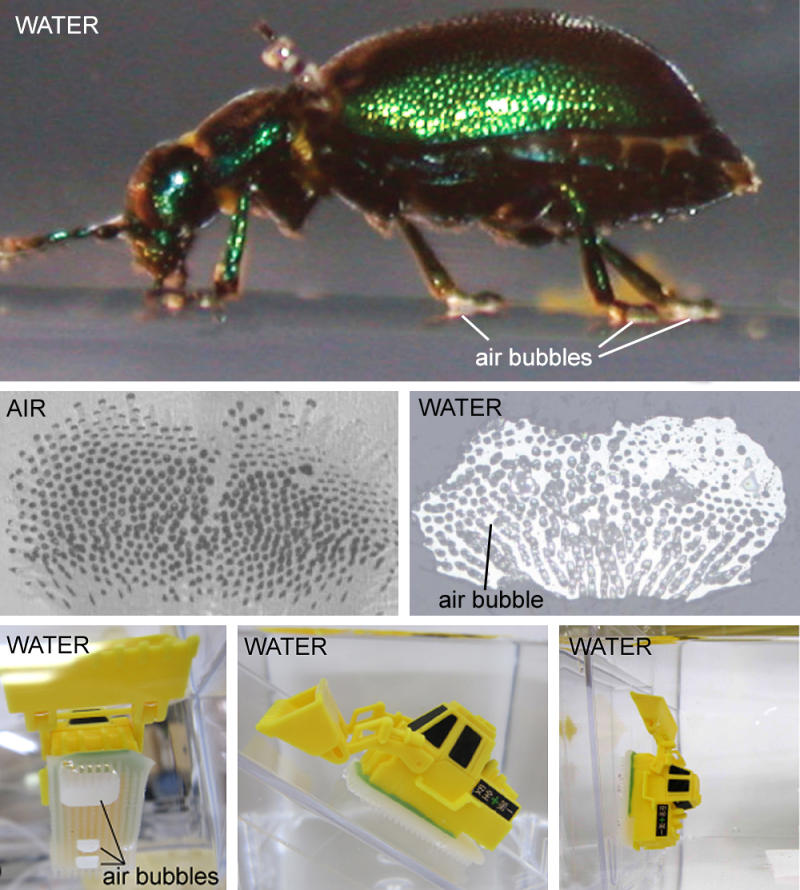We're open daily! View holiday hours
Science News
Underwater Beetles
August 15, 2012

Some animals have the most amazing abilities to walk on walls, upside down, and across unusual surfaces. Now a new study in the Proceedings of the Royal Society B demonstrates how certain beetles can walk underwater!
The trick with most vertical or inverted walkers has to do with forces or sticky adhesives that work well on dry land, but not so much when things get wet and, well, slippery.
But two researchers, Stanislav Gorb of Kiel University in Germany and Naoe Hosoda of the National Institute for Material Science in Japan, decided to test the locomotion of Gastrophysa viridula, normally a terrestrial beetle, underwater. Ed Yong describes their submarine movements in Discover:
… once they touch the bottom, they can walk around very easily. Their footsteps aren’t precarious ones, either. While they don’t walk quite as easily underwater as they do on land, they can still produce a fair amount of force.
How are the beetles doing this? Bubbles, of course! The beetles use air bubbles trapped between their setae (the small hairs on the bottom of the beetles' feet) to produce surface tension that creates stickiness underwater… At least for something the size of a beetle.
But wait, these bubbles probably do even more! Nature reports that
The bubbles themselves provide adhesion, but they may also de-wet the area around the beetles’ feet to allow the ‘hairs’ to function in the same way as they do in the dry.
Oils on the setae further enhance the adhesive effect.
So what next? Bio-inspired technology! Co-author Gorb explains their new environmentally-friendly, underwater adhesive, “Inspired by this idea, we have designed an artificial silicone polymer structure with underwater adhesive properties.” Microscopic bristles keep air trapped in the material, mimicking the beetles’ bubbles, keeping the material sticky underwater without using glue. Good ideas stick!
Images: Stanislav Gorb and Naoe Hosoda